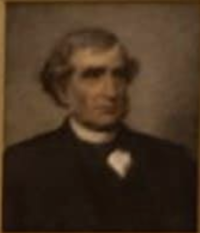Impact of Camera Characteristics on DNN Model Inference Performance
Introduction
There are many image recognition applications that classify images using pre-trained Neural networks. However, testing images used in these application could be captured by different users, cameras, environments, etc. How could the image quality affects the application decisions or classification? Using ISETCameraDesigner, we will generate images with different camera characteristics. These set of images will be evaluated on different DNN model inferences and conclusions will be drawn about the different DNN models performance, scores, and effect of the images quality on the predictions.
Background
F/#
The ratio of the aperture diameter to focal length.
N: F/# (F-Number)
f: Focal Length (m)
D: Aperture Diameter (m)
Focal Length
The measurement of how strongly the system converges or diverges light.
Exposure Time
The duration of the camera/sensor collects light.
ISET AI Camera Designer
- Build Camera subsystems; Optics, Sensor, and IP.
- Use a collection of images.
- Generate Images from the original Images with the Camera Design.
- Evaluates Original Images vs Generated Images on different pre-trained DNNs.
- Scores are based on the classification match (top-1) of the original and generated images.
ImageNet
ImageNet Dataset:
- 1000 classes/categories
- 1,281,167 training images
- 50,000 validation images
- 100,000 test images
DNN Architecture
- Pre-trained on ImageNet dataset and available in Matlab
- Chosen for smaller footprint targeting embedded applications
- All Convolutional Neural Networks (CNNs)
- Output a predicted class using probability distribution from softmax
| DNN Architecture | Depth | Size | Parameters (Millions) | Image Input Size |
|---|---|---|---|---|
| GoogleNet | 22 | 27 MB | 7.0 | 224-by-224 |
| SqueezeNet | 18 | 5.2 MB | 1.24 | 227-by-227 |
| ShuffleNet | 50 | 5.4 MB | 1.4 | 224-by-224 |
| MobileNetV2 | 53 | 13 MB | 3.5 | 224-by-224 |
| EfficientNetB0 | 85 | 20 MB | 5.3 | 224-by-224 |
Methods
In this project, there were many techniques that were used to measure and analyze the data. It was fully ran thru MATLAB and ISETCam. MATLAB and ISETCam played significant role in generating images with different Camera characteristics. Throughout this project, different DNN models, ImageNet datasets, and camera characteristics were used to measure the mean classification accuracy of the Beagle Category (196 Images) and analyze them.
Experiments
In this project, we tweaked the camera characteristics by incorporating a combination of parameters in the camera subsystems such as Optics and Image Sensor. Our approach involved conducting multiple experiments to thoroughly investigate the effect of the different camera characteristics on the DNN models classification.
The combination of data used in each of the experiments is as follows:
F/# - Focal Length Combination
F/#: f/1.0, f/1.4, f/2, f/4, f/5.6, f/8, f/11, f/16, f/22, f/32
Focal Lengths used for each of F/#: 15, 20, 35, 50 mm
Focal Length (mm) - Exposure Time Combination
Focal Lengths: 15, 20, 28, 35, 50, 70, 85, 135, 200, 300 mm
Exposure Time used for the each Focal Length: Focal Length +- 3 milliseconds
Read Noise
Read Noise: 0.1, 1, 5, 10, 20 mV
Results
Conclusions
- DNN model performance is impacted by camera parameters
- Empirical iterative discovery process to determine impact direction and magnitude
- Camera parameters’ adjustments can be applied at training time either to restrict or widen the data distribution depending on application
- Restrict to target a smaller model parameter space (more constrained application)
- Widen to generalize better (less constrained application)
- At inference time they can bring an out-of-distribution example into in-distribution
Appendix
You can write math equations as follows:
You can include images as follows (you will need to upload the image first using the toolbox on the left bar, using the "Upload file" link).


